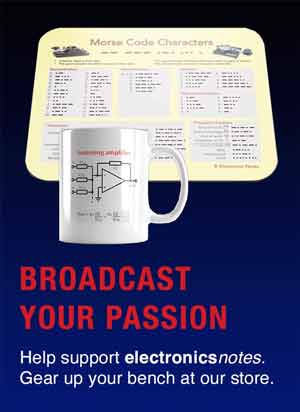Decoherer
- the decoherer required to reset the coherer once a signal has been received and its modes of operation.
Radio Coherer History Includes:
Coherer history & basics
Coherer construction & operation
Decoherer
One of the issues that needed to be overcome with the Branly form of coherer was that it needed to be decohered once a signal had been received ready for the next signal.
Once a signal had been detected by the coherer, the device remained in its "cohered" and required re-setting before it could detect another signal.
The process whereby the coherer was reset was termed decohering and the mechanism that did it was called a decoherer.
There were several methods used as decoherers, each had their own advantages and disadvantages.
Decoherer principle and action
The basic action of the decoherer was to knock or vibrate the filings in the coherer to cause them to separate. In their cohered state the filings or particles stick together as a result of the action of the received signal. The mechanism behind this is believed to be a micro-weld phenomenon resulting from the radio frequency field. As the weld is very small, it only takes a small tap or vibration of the coherer to get them to separate and decohere.
Basic decoherers
There were several techniques that were used to act as decoherers
- Electric vibrator: One method of providing the vibration necessary was to have an electric vibrator. This was mechanically linked to the coherer sufficiently to provide the mild vibration needed for it to act as a decoherer.
- Clockwork vibrator: Another method of creating a decoherer was to use a clockwork mechanism. This had the advantage that it did not provide any additional electrical noise that would appear as interference. Systems for clockwork coherers included a cogwheel rubbing on a spring which was in turn attached to the coherer
- Relay actuator: This was probably the most advanced and usable form of decoherer. It used a scheme whereby once the signal was received, and the coherer started to conduct, not only did this create an audible sound via a sounder, but it also operated an actuator that knocked the coherer and cause it to decohere. In this way the decoherer operated only once a signal was received and re-set it almost immediately to receive a further signal.
 Written by Ian Poole .
Written by Ian Poole .
Experienced electronics engineer and author.
More History:
Radio history timeline
History of the radio
Ham radio history
Coherer
Crystal radio
Magnetic detector
Spark transmitter
Morse telegraph
Valve / tube history
PN junction diode invention
Transistor
Integrated circuit
Quartz crystals
Classic radios
Mobile telecoms history
Vintage mobile phones
Return to History menu . . .



